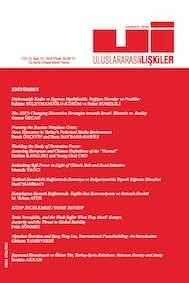
Uluslararası İlişkiler Dergisi
Yazarlar: M. Hüseyin MERCAN, M. Tahir KILAVUZ
Konular:Sosyal
DOI:10.33458/uidergisi.513515
Anahtar Kelimeler:Tunisia,Elite Theory,Hardliner and Softliner Elites,The Arab Uprisings,Democratization and Transition Process
Özet: This study focuses on democratization process in Tunisia since January 14th, 2011, the date President Zine el Abidine Ben Ali left the country. The article examines democratization and normalization process of Tunisia as a starting point of the Arab Uprisings through the conceptual framework of elite choice theory. The theory postulates that if softliner regime and opposition elites cooperate, democratization process succeeds. Based upon this assumption, this paper seeks to answer how it was possible for Tunisia to follow a more successful transition path when compared to the other countries in the region through the steps and policies implemented by the representatives of the leading softliner actors in the Tunisian regime and opposition.
Dergi editörleri editör girişini kullanarak sisteme giriş yapabilirler. Editör girişi için tıklayınız.